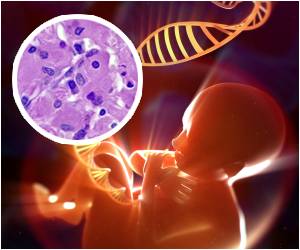Three sets of genetic markers that could potentially pave the way for new diagnostic tools for a deadly type of brain tumour have been identified by researchers at The University of Nottingham.

It focuses on a rare and aggressive cancer called Central Nervous System primitive neuro-ectodermal brain tumours. Patients with CNS PNET have a very poor prognosis and current treatments, including high dose chemotherapy and cranio-spinal radiotherapy are relatively unsuccessful and have severe lifelong side-effects. This is particularly the case in very young children.
Despite the need for new and more effective treatments, little research has been done to examine the underlying causes of CNS PNET, partly due to their rarity. The Nottingham study aimed to identify molecular markers as a first step to improving the treatments and therapies available to fight the cancer.
The Nottingham team collaborated with researchers at the Hospital for Sick Kids in Toronto, Canada, to perform an International study collecting 142 CNS PNET samples from 20 institutions in nine countries.
Professor Richard Grundy said: "Following our earlier research we realised that an international effort was needed to bring sufficient numbers of cases together to make the breakthrough we needed to better understand this disease or indeed diseases identified in our study. The next step is to translate this knowledge into improving treatments."
By studying the genetics of the tumours, they discovered that instead of one cancer, the tumours have three sub-types featuring distinct genetic abnormalities and leading to different outcomes for patients.
Advertisement
When compared with clinical factors including age, survival and metastases (the spread of the tumours through the body), they discovered that group 1 tumours (primitive neural) were found most often in the youngest patients and had the poorest survival rates. Patients with group 3 tumours had the highest incidence of metastases at diagnosis.
Advertisement
The research was funded by the Canadian Institute of Health Research, the Brainchild/Sick Kids Foundation and the Samantha Dickson Brain Tumour Trust.
Chief Executive of Samantha Dickson Brain Tumour Trust, Sarah Lindsell, said: "As the UK's leading brain tumour charity, and the largest dedicated funder of brain tumour research, we are delighted that our investment has led to such significant success. It is great to see that understanding of these tumours is improving – this is desperately needed given the poor outcomes for children with this tumour. Samantha Dickson Brain Tumour Trust is proud to have been instrumental in this work."
Source-Eurekalert














